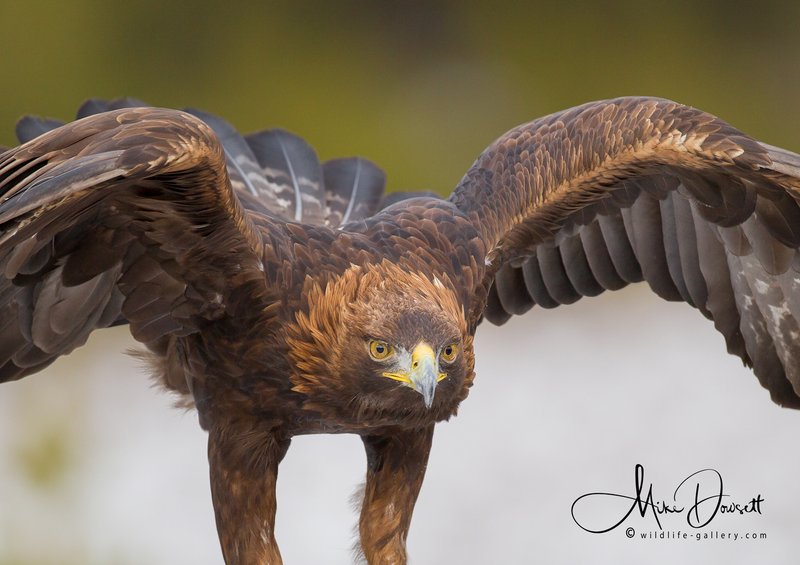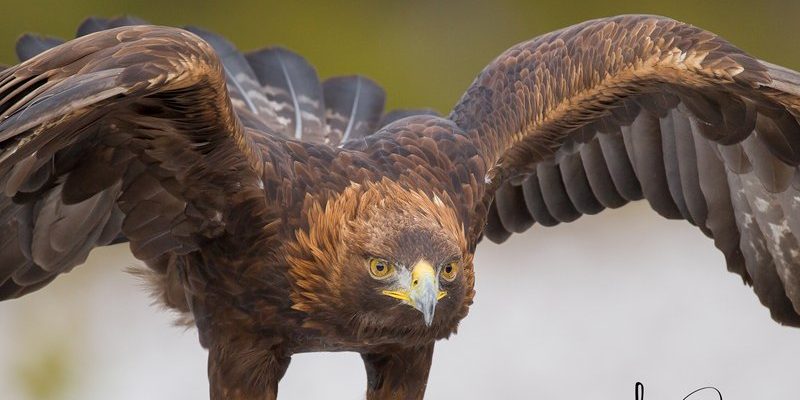
But there’s more to these birds than you might think. They’re not just symbols of strength and freedom; they have fascinating characteristics and behaviors that many people overlook. Let’s dive into the world of the golden eagle and uncover some intriguing facts about this magnificent raptor.
1. A Powerhouse Predator
Golden eagles are considered apex predators, which means they sit at the top of the food chain. They typically hunt small to medium-sized mammals, such as rabbits, ground squirrels, and even young deer. But why do they make such effective hunters?
Here’s the thing: golden eagles have incredibly sharp talons and beaks designed for gripping and tearing into their prey. Their eyesight is another superpower; they can spot a rabbit from over a mile away! When it comes to hunting, they can fly at speeds reaching up to 150 miles per hour when diving. That’s like a sports car on the road—fast and relentless.
This combination of speed, strength, and keen vision makes them exceptional hunters and allows them to thrive in various habitats, from mountains to open grasslands.
2. Remarkable Size and Wingspan
If you’ve never seen a golden eagle up close, you might be surprised by their size. Adult golden eagles can have a wingspan of up to 7 feet! That’s wider than some doors! Their wings are long and broad, which helps them soar effortlessly on thermal updrafts while searching for food.
To give you an idea, a golden eagle can weigh anywhere from 3 to 6.5 kilograms (7 to 14 pounds). That’s fairly hefty for a bird! Many folks might not realize that this size advantage helps them dominate their territory and deter potential threats.
Additionally, their golden-brown feathers aren’t just for show. This coloration helps them blend into their natural surroundings, making it easier to go unnoticed while hunting or resting.
3. Their Nesting Habits
Golden eagles build some of the largest nests of any bird species. They prefer to nest on cliffs, tall trees, or other elevated areas to keep their young safe from predators. The nests can be quite impressive, measuring up to 6 feet across and weighing as much as 1,000 pounds!
What’s interesting is that golden eagles often reuse and add to their nests each breeding season. Over time, these nests can grow to be massive structures that might stand for years. When golden eaglets are born, they rely on their parents for food and protection until they learn to fly, which usually takes about 10 to 12 weeks.
Their dedication to the family unit is striking. Both parents will help care for the chicks, which is not as common in the bird world. Talk about teamwork!
4. Migration and Territorial Behavior
You might be wondering whether golden eagles migrate, and the answer is yes—sort of. While some populations are migratory, others are resident birds that stay in the same area year-round. The migratory ones often move to lower elevations during the winter months to find food more easily when snow covers the ground.
What’s especially fascinating is their territorial nature. Golden eagles can be quite protective of their hunting grounds, which can span up to 60 square miles. They’ll often engage in aerial displays to assert their dominance, soaring and swooping to show off their skills.
This behavior highlights their need for a sustainable habitat and resources to survive. It’s a reminder that their territory isn’t just a home—it’s also a vital part of their identity.
5. Cultural Significance
Throughout history, golden eagles have held immense symbolic value in various cultures. They are often associated with power, freedom, and bravery. For example, Native American tribes have revered the golden eagle, often featuring it in their folklore and rituals. Some tribes even use feathers in their spiritual ceremonies, believing that the eagle serves as a messenger to the spirit world.
In modern times, the golden eagle is also a national symbol for several countries. You might find it adorning flags and coats of arms, representing strength and valor.
Their cultural significance shows how deeply intertwined these magnificent birds are with human history, often reflecting our own values and ideals.
6. Lifespan and Reproduction
Golden eagles typically have a long lifespan for birds, living up to 20-30 years in the wild. This longevity allows them plenty of time to mate and rear their young each breeding season.
Speaking of breeding, golden eagles usually mate for life. Once they find a partner, they form a strong bond that can last for years. The female is usually larger than the male and takes on the primary role of incubating eggs, which typically number between 1 to 4 in a clutch.
Both parents share the responsibility of feeding and protecting the chicks once they hatch. This cooperative parenting is not only remarkable but also crucial for the chicks’ survival.
7. Fascinating Communication
Golden eagles have a unique way of communicating, primarily using vocalizations and body language. Their calls are often described as high-pitched whistles, and they use these sounds to convey various messages, like warning of danger or signaling their presence to a mate.
Additionally, body language plays a significant role in their communication. For instance, when interacting with other eagles or potential threats, they might spread their wings or change posture.
You might not think of birds as having complex forms of communication, but golden eagles certainly prove otherwise. The way they express themselves highlights their intelligence and social structure.
8. Conservation Status and Threats
While the golden eagle is not currently endangered, they do face several threats that could impact their populations. Habitat loss, poisoning from lead bullets, and collision with wind turbines are some of the challenges they encounter.
Efforts are being made to protect these majestic birds through various conservation programs. Education about the importance of preserving their habitats plays a crucial role in ensuring their future.
As we continue to learn about these incredible creatures, it’s essential to advocate for their protection. After all, golden eagles are not just part of our natural heritage—they also play a vital role in their ecosystems.
9. The Role of Golden Eagles in Ecosystems
Golden eagles are not just impressive in their own right; they serve an essential function in maintaining ecosystem health. As apex predators, they help control populations of their prey species, ensuring a balanced environment.
By regulating these populations, they contribute to the overall health of their habitats. Without golden eagles and other raptors, you might see an overabundance of smaller mammals, which can lead to other ecological issues.
So next time you see a golden eagle soaring high above, remember that they’re doing vital work as nature’s balance keepers. Their presence is a sign of a healthy ecosystem—and that’s something worth protecting.
10. How to Spot a Golden Eagle
If you’re interested in birdwatching, spotting a golden eagle can be an exhilarating experience! Look for them in open habitats like mountains, grasslands, or near large bodies of water. Early mornings and late afternoons are often the best times for sightings as they’re more active during those hours.
Here are some tips to help you identify a golden eagle:
- Look for their size: They’re larger than many other birds of prey.
- Check the wingspan: Their wings are broad and long.
- Watch their flight patterns: They often glide on thermals, so look for soaring behavior.
- Observe their plumage: Adult golden eagles have a dark brown body with a golden nape.
Using binoculars can enhance your chances of a great view. Plus, being out in nature, waiting to see these magnificent birds in action, is an experience in itself.
In closing, golden eagles are remarkable creatures with fascinating traits and behaviors that make them stand out in the avian world. From their incredible hunting skills to their cultural significance, there’s so much to appreciate about these magnificent birds. So whether you’re an avid birdwatcher or just curious about wildlife, take a moment to appreciate the golden eagle and all it represents in nature.

